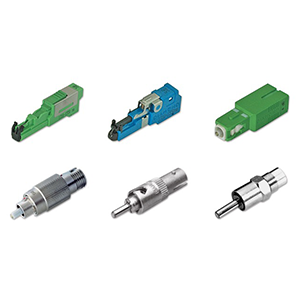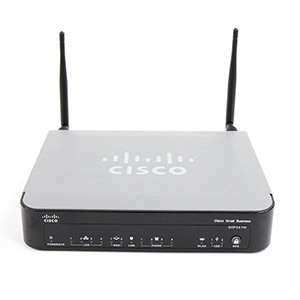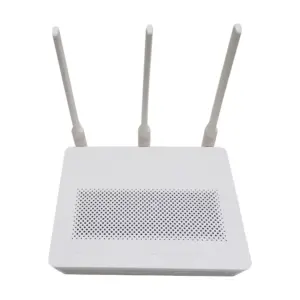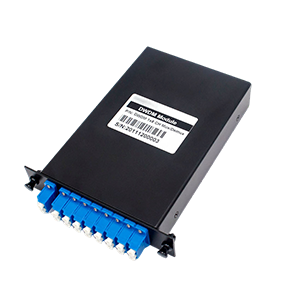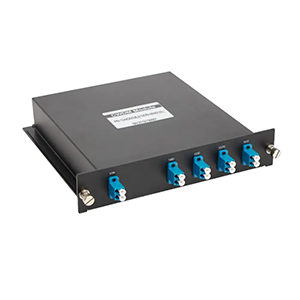As a key component in communication networks, optical communications play a pivotal role in modern society. This article will give you an in-depth discussion of the crucial optical attenuator and its role in optical communications. We will first define the basic concepts and structure of optical attenuators and explain their important position in optical communication systems. Next, we will analyze the working principle of the optical attenuator, including how to accurately control the optical signal power and use optical principles to achieve power adjustment.
In addition, we will introduce common types of optical attenuators, such as fixed attenuators and adjustable attenuators, and compare their differences in performance and application scenarios. Finally, we will introduce in detail the typical applications of optical attenuators in optical fiber communications, optical sensing and other fields, and analyze their important role in improving the performance of optical communication systems.

What is an optical attenuator
Let me introduce you to the basic concepts of optical attenuators in detail:
Definition and structure of optical attenuator:
- An optical attenuator is an optical component used for adjustable attenuation of the power of optical signals.
- Mainly composed of two fiber optic connectors and an attenuation element, usually using neutral density filters or variable dampers.
- By adjusting the attenuation component, the power of the input optical signal can be controlled, thereby achieving precise adjustment of the optical signal amplitude.
The role of optical attenuators in optical communication systems:
- Power adjustment: The optical attenuator can reduce the optical signal power to a suitable receiving sensitivity range to avoid oversaturation of the receiving end.
- Mismatch compensation: Due to optical power mismatch between different light sources or fiber connections, attenuators need to be used for compensation.
- Dynamic range expansion: Variable optical attenuators can expand the dynamic range of the optical receiver and improve the flexibility of the system.
- Signal isolation: Optical attenuators can introduce losses in the optical path and play the role of isolating different signals.
- Test analysis: In optical communication testing, optical attenuators are used to simulate fiber link losses and analyze system performance.
Types of optical attenuators:
- Fixed attenuator: Provides a fixed attenuation value that cannot be adjusted and is used for conventional power compensation.
- Adjustable attenuator: A continuously adjustable attenuation range is achieved through mechanical or optical adjustment, suitable for dynamic adjustment.
- Optical integrated attenuator: Integrate attenuation components into optical integrated circuits or optical modules to provide miniaturized solutions.
In summary, optical attenuators, as a key optical communication device, play an important role in optical signal power control, mismatch compensation and test analysis. It is one of the essential components for building high-performance optical communication systems.
The working principle of optical attenuator
Let me explain to you in detail how the optical attenuator works:
How does the optical attenuator control the power of the optical signal:
- The optical attenuator achieves control of optical power by introducing adjustable attenuation loss in the optical signal transmission path.
- There are usually two ways to implement adjustable attenuation:
1) Mechanical adjustment: Use movable attenuation components (such as neutral density filters) to adjust attenuation loss.
2) Electronic adjustment: Use electronic components such as variable dampers to dynamically control the attenuation of the optical signal.
The optical attenuator uses optical principles to achieve power adjustment:
- The attenuation element inside the optical attenuator usually uses a neutral density filter (Neutral Density, ND).
- Neutral density filter is a special optical filter that can evenly attenuate optical power without changing the dispersion characteristics of light.
- When the optical signal passes through the neutral density filter, a certain degree of optical power attenuation will occur.
- By adjusting the position or rotation angle of the filter, the degree of attenuation can be precisely controlled.
Working principle of optical attenuator:
- After the optical signal enters the optical attenuator from the input end, it will first pass through an optical fiber connector.
- Then the optical signal will encounter the neutral density filter and produce corresponding power attenuation according to the attenuation coefficient of the filter.
- Finally, it is output through another optical fiber connector to complete the entire attenuation process.
- By adjusting the position or angle of the filter, the degree of attenuation can be continuously changed, thereby achieving dynamic control of the optical signal power.
In short, optical attenuators use the principle of optical filtering to accurately control the power of optical signals through adjustable neutral density filters. This is the key to its important role in optical communication systems.
Main types of optical attenuators
Let me introduce to you the main types of optical attenuators and their characteristics:
Fixed Optical Attenuator:
- Provide fixed attenuation value, usually using neutral density filter or fiber attenuation section.
- The attenuation value is generally between 0.5dB and 30dB, which varies according to different models.
- Apply to conventional optical power compensation, such as power matching from light source to optical fiber.
- Simple structure, low cost, suitable for large-scale deployment scenarios.
Variable Optical Attenuator (VOA):
- The attenuation value can be continuously changed through mechanical or electronic adjustment.
- The attenuation range is usually 0dB to 30dB or greater, with high accuracy and linear characteristics.
- Apply to dynamic optical power adjustment, optical power mismatch compensation, optical receiver dynamic range expansion, etc.
- The structure is relatively complex and the cost is high, but it is more flexible and adaptable.
Integrated Optical Attenuator:
- Integrate attenuation components inside optical integrated circuits or optical modules.
- Small in size and easy to install, it is suitable for use in compact optoelectronic equipment.
- Can provide fixed or adjustable attenuation function, taking into account performance and integration.
- Used in high-density optical interconnection, optical receivers, optical transmitters and other fields.
Difference comparison:
- Performance: Adjustable attenuator has wider attenuation range and higher accuracy.
- Application scenarios: Fixed attenuators are suitable for conventional power compensation, while adjustable attenuators are more suitable for dynamic adjustment.
- Cost: Fixed attenuators cost less, adjustable attenuators increase slightly, and integrated attenuators are in between.
- Integration: Integrated attenuators have the advantages of higher integration and miniaturization.
In short, it is very critical to select the appropriate type of optical attenuator based on specific application requirements and environmental conditions, and factors such as performance, cost, and integration need to be weighed.
Typical applications of optical attenuators in optical communications
Let me introduce to you the typical application scenarios of optical attenuators in the field of optical communications:
Applications in optical fiber communication systems:
- Power matching from light source to optical fiber: Use a fixed attenuator to adjust the output power of the light source to match the coupling characteristics of the optical fiber.
- Optical power mismatch compensation: In fiber connections, optical splitters, etc., adjustable attenuators are used to compensate for optical power mismatch.
- Receiver dynamic range expansion: Use an adjustable attenuator at the front end of the optical receiver to broaden the dynamic range of the receiver.
- Signal isolation: Adding an attenuator to the optical link can isolate different optical signal channels and avoid mutual interference.
Applications in light sensing systems:
- Light sensor signal conditioning: Use an adjustable attenuator to adjust the output signal of the light sensor to keep it within the optimal working range of the receiver.
- Optimization of optical fiber sensing network: Adding attenuators to the optical fiber sensing network can compensate for the optical power mismatch between different sensing points.
- Fiber optic sensing system testing: Use an adjustable attenuator to simulate the attenuation loss of the optical fiber link, and perform performance testing and analysis on the sensing system.
The role of optical attenuators in improving system performance:
- Improve light receiving sensitivity: Proper use of attenuators can avoid oversaturation of the receiver and improve detection sensitivity.
- Enhance the dynamic range of the system: The adjustable attenuator can expand the dynamic working range of the optical receiver and improve the fault tolerance of the system.
- Optimizing optical signal transmission quality: By compensating for optical power mismatch, the transmission characteristics of optical signals can be improved and transmission losses can be reduced.
- Simplify system design: Attenuators can be used as a universal optical power adjustment method to simplify the design of optical communication systems.
In short, optical attenuators are widely used in the field of optical communications. They can not only effectively adjust and control optical signal power, but also optimize system performance and improve overall reliability and flexibility. It is one of the key components for building high-quality optical communication systems.
Selection and configuration of optical attenuator
Let me introduce you to the factors you need to consider when selecting and configuring an optical attenuator:
Select optical attenuator type and parameters:
- Determine whether fixed attenuation or adjustable attenuation is required based on the application scenario:
- Fixed attenuators are suitable for conventional power compensation, and adjustable attenuators are suitable for dynamic adjustment.
- Determine the required attenuation range and accuracy:
- Select an appropriate attenuation range based on factors such as link loss and receiving sensitivity.
- For applications requiring high precision, choose an adjustable attenuator with higher adjustment accuracy.
- Consider the installation size and integration of the optical attenuator:
- Appropriate dimensions need to be selected based on equipment space limitations.
- For applications with high integration requirements, integrated optical attenuators can be selected.
Correctly install and debug the optical attenuator:
- Installation location:
- The optical attenuator should be installed at a suitable location on the optical path, such as the connection between the light source and the optical fiber.
- Make sure there are no other obstacles in the optical path and the optical signal can pass through the attenuator smoothly.
- Connection method:
- Connect the optical attenuator to the optical fiber interface correctly to ensure reliable connection.
- For adjustable attenuators, the angle or position of the attenuation element also needs to be adjusted to obtain the required attenuation value.
- Debugging process:
- Use equipment such as optical power meters to measure input and output power to verify the performance of the attenuator.
- According to actual needs, fine-tune the attenuation value of the attenuator until it reaches the best working condition.
- Record the final attenuation value for subsequent maintenance and troubleshooting.
Other notes:
- Ensure that the optical attenuator completely matches the optical port of the optical fiber/device to avoid coupling loss of optical signals.
- Regularly check the cleanliness of the attenuator to prevent performance degradation caused by dust and pollution.
- For adjustable attenuators, avoid excessive adjustment to avoid affecting the life of the attenuator components.
In short, selecting the appropriate optical attenuator type and parameters, and adopting correct installation and debugging methods are very important to optimize the performance and reliability of the optical communication system.
Summary
Optical attenuator is undoubtedly an indispensable key device in communication networks. Our company focuses on providing high-quality optical attenuators and related products to help customers build excellent optical communication infrastructure. Whether you need a fixed attenuator or an adjustable attenuator, we have a rich product line and a professional technical support team that can tailor the best solution for you.
Our optical attenuators adopt advanced optical technology and perform well in controlling optical signal power and improving transmission efficiency, which can effectively improve the performance of your optical communication system. At the same time, we also provide professional installation and commissioning guidance to ensure that the equipment can be put into use quickly. Contact us now to learn more about our company’s optical attenuator products and services!
Fiber optic attenuator FAQ
An attenuator is a device used to reduce or control the power level of an optical signal in fiber optic communication systems.
Attenuators are necessary to prevent the optical signal from becoming too strong, which can lead to saturation or damage in the receiving equipment.
Common types of optical attenuators include fixed attenuators, variable attenuators, fiber optic attenuator pads, and in-line attenuators.
Optical attenuators typically use absorptive or reflective materials to selectively reduce the intensity of the light signal passing through them.
Attenuators are used in various fiber optic applications, such as testing, power balancing, protecting sensitive equipment, and adjusting signal levels.
The required attenuation level depends on factors like the input power, desired output power, and the specific equipment in the optical communication system.
Without an attenuator, the optical signal may be too strong, leading to receiver saturation, component damage, or poor signal-to-noise ratio.
Attenuators are typically characterized by their attenuation value, which is measured in decibels (dB) using an optical power meter or loss test set.
Yes, industry standards, such as those from the Telecommunications Industry Association (TIA) and International Electrotechnical Commission (IEC), provide guidance on the proper use of optical attenuators.
Advancements include the development of more compact, tunable, and higher-performance attenuators to meet the evolving needs of modern fiber optic networks.

